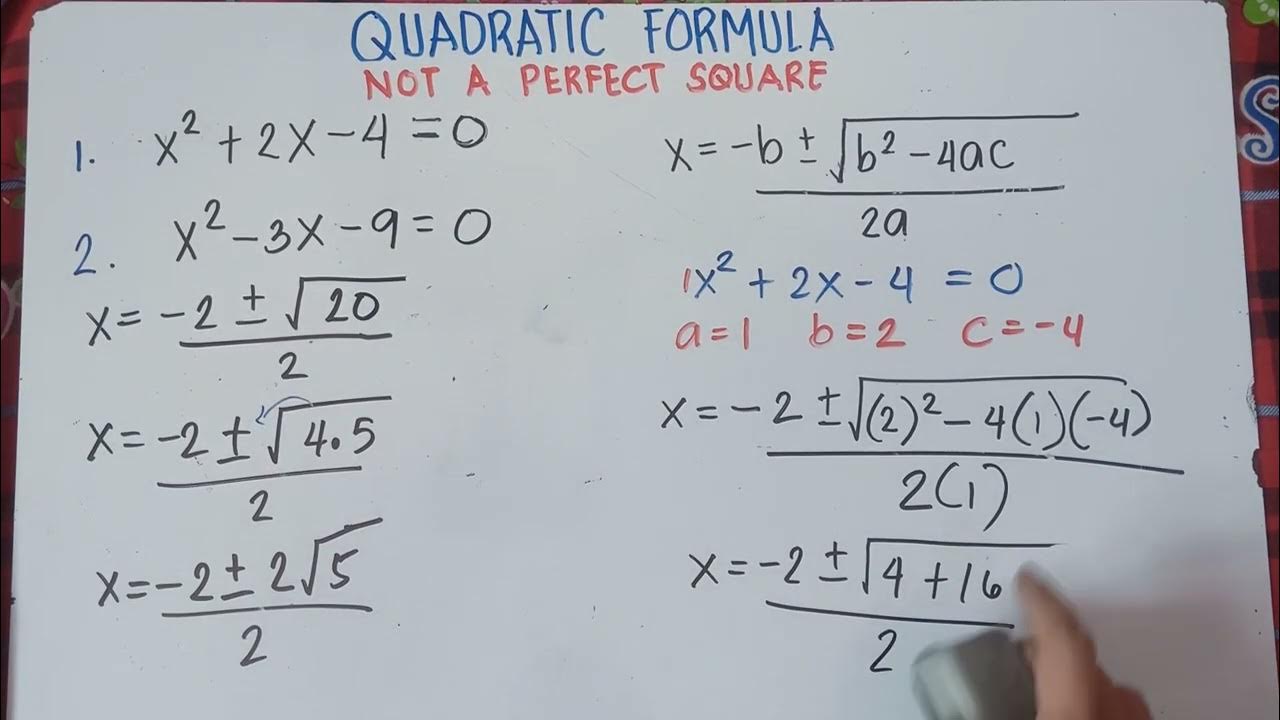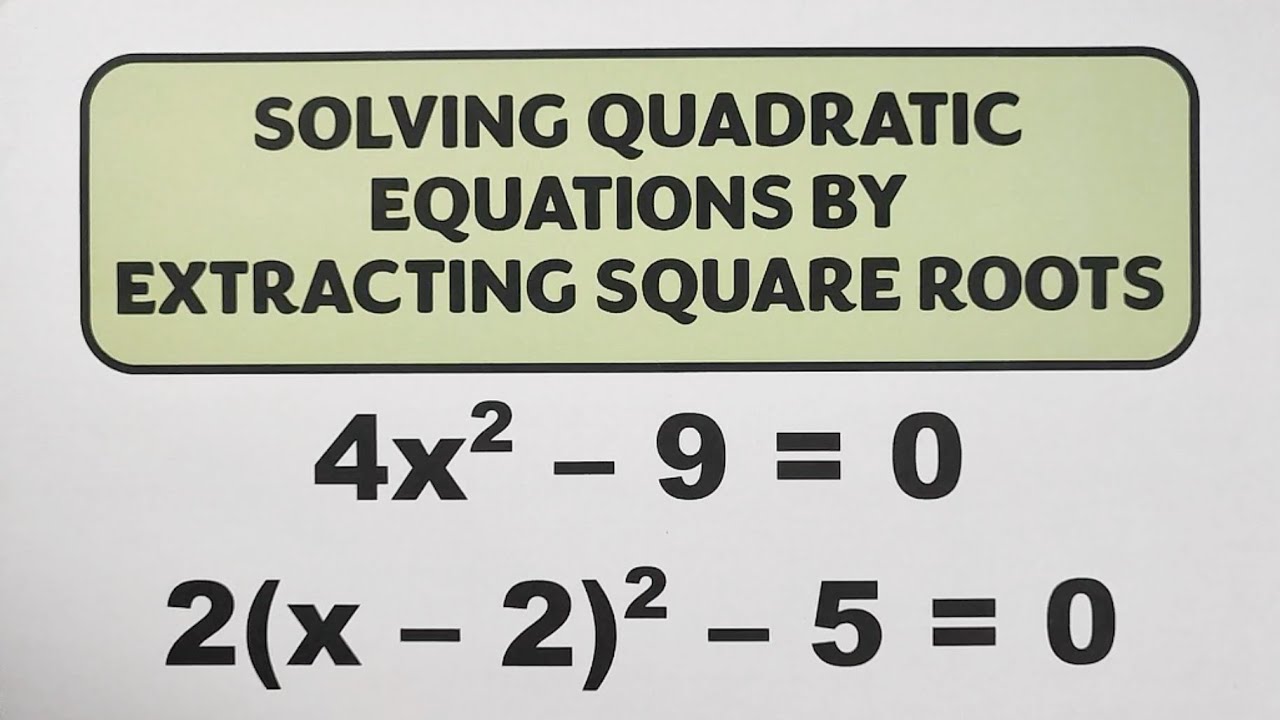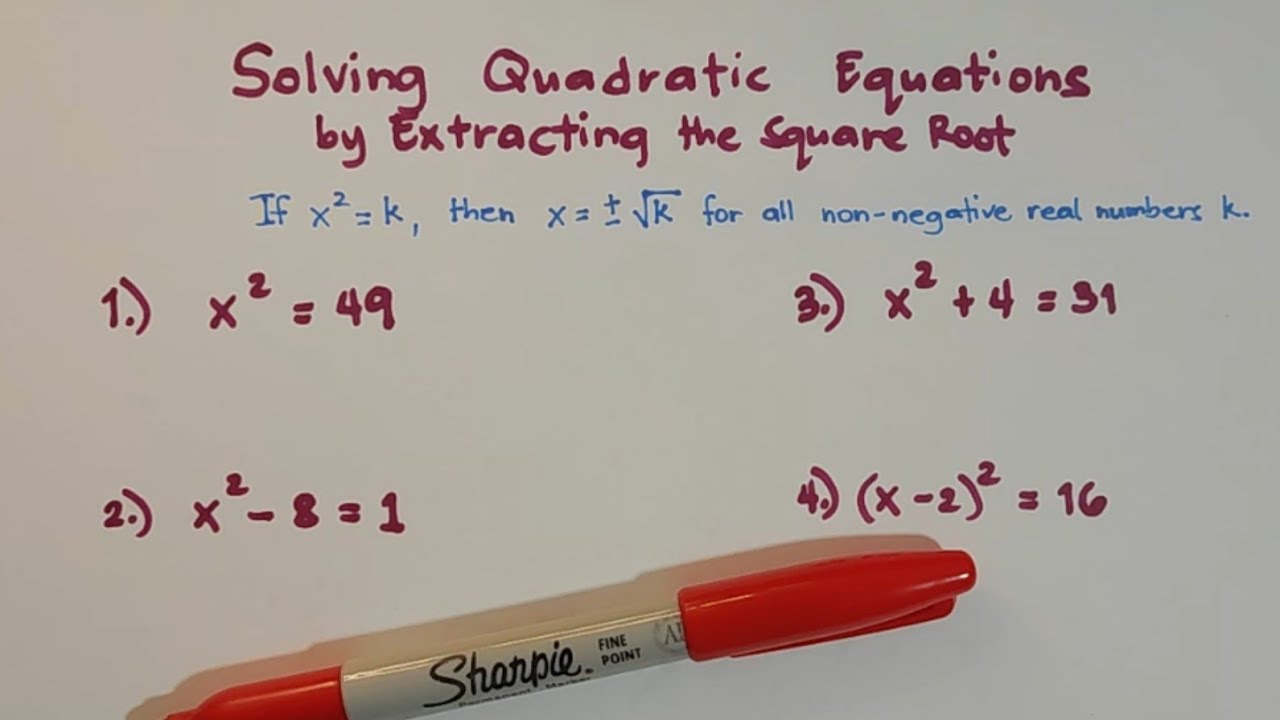Matematika Kelas 4 - Akar Pangkat Dua (Akar Kuadrat)
Summary
TLDRIn this engaging mathematics lesson, the teacher introduces square roots, emphasizing the importance of memorizing squares from 1 to 100. The concept is explained as the inverse of squaring a number, with examples illustrating how to find square roots of two-digit numbers. Step-by-step methods for calculating square roots of numbers like 196 and 1369 are demonstrated, making the learning process clear and accessible. The lesson encourages students to embrace math as an enjoyable subject, reinforcing the idea that with practice, understanding square roots can be straightforward and fun.
Takeaways
- 😀 Understanding square roots is essential for mathematics.
- 😀 Memorizing the squares of numbers from 1 to 10 is recommended.
- 😀 The square root of a number is the opposite operation of squaring it.
- 😀 For example, the square root of 9 is 3 because 3 squared is 9.
- 😀 To find the square root of numbers between 100 and 10,000, follow a specific method.
- 😀 Start by separating the number into groups of two digits from the right.
- 😀 Identify the largest square less than or equal to the left group.
- 😀 Subtract the square from the left group to find the remainder.
- 😀 For the last digit, determine which square's unit digit matches the number's unit digit.
- 😀 The square root of 196 is 14, and the square root of 1369 is 37.
Q & A
What is the main topic of today's math lesson?
-The main topic is square roots, specifically learning about square root calculations.
Why is it important to memorize the squares of numbers from 1 to 100?
-Memorizing the squares of numbers helps in understanding and calculating square roots more effectively.
How is the square root of a number defined?
-The square root of a number is the value that, when multiplied by itself, gives the original number.
What is the square of 3, and what is its square root?
-The square of 3 is 9, and the square root of 9 is 3.
What steps should be taken to find the square root of 196?
-To find the square root of 196, separate the number into two digits from the right, find the largest square less than or equal to the left number, and determine the square root by comparing the results.
What is the significance of separating the digits when calculating square roots?
-Separating the digits helps simplify the calculation by allowing focus on manageable parts of the number, particularly for larger numbers.
What is the square root of 1369, and how is it determined?
-The square root of 1369 is 37, determined by following the method of separating digits and calculating the appropriate squares.
How do you identify which squares to compare with when finding a square root?
-You identify the squares to compare by finding which square number is closest to, but less than or equal to, the left-hand number from the separation of digits.
What should students remember about the square roots between 100 and 10000?
-Students should remember that the results for square roots within this range will always be two-digit numbers.
How does the teacher encourage students regarding mathematics?
-The teacher encourages students by stating that mathematics is easy and enjoyable, motivating them to stay enthusiastic about learning.
Outlines

This section is available to paid users only. Please upgrade to access this part.
Upgrade NowMindmap

This section is available to paid users only. Please upgrade to access this part.
Upgrade NowKeywords

This section is available to paid users only. Please upgrade to access this part.
Upgrade NowHighlights

This section is available to paid users only. Please upgrade to access this part.
Upgrade NowTranscripts

This section is available to paid users only. Please upgrade to access this part.
Upgrade NowBrowse More Related Video

Solving Quadratic Equations by Quadratic Formula | Not A Perfect Square | Part 2 |

Mengenal Bangun Datar Persegi - Video Pembelajaran Matematika Kelas 4

Solving Quadratic Equations by Extracting the Square Roots by @MathTeacherGon

Video Pembelajaran Bermakna ( Deep Learning Focus ) dengan mapel Matematika kelas 1 SDN 6 Boja.

How to Solve Quadratic Equations by Extracting the Square Root? @MathTeacherGon

How To Simplify Radicals
5.0 / 5 (0 votes)